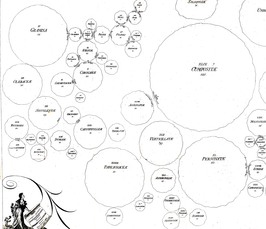Division and Affinity: Visualizing Diversity in Natural History, 17th ‒ 18th Centuries
Research Seminar
- Online event via Zoom
- Datum: 09.12.2020
- Uhrzeit: 15:00 - 17:00
- Vortragende(r): Staffan Müller-Wille, Niklaas Goersch
- Ort: Online via zoom
- Kontakt: boehm@biblhertz.it

One and a half centuries later, another teacher at the Hamburg Johanneum, Paul Dietrich Giseke (1741-1796), published a radically different kind of diagram. It was entitled Tabula genealogico-geographica affinitatum plantarum, and arranged plant families in analogy to a map. We are going to analyze how these visualizations were crafted, whether there were models or precedents in other domains, and what purposes they served. Our guiding question will be: Why Hamburg?
Staffan Müller-Wille: PhD in Philosophy, Bielefeld, 1997. Has held positions at MPI for History of Science, Berlin, University of Exeter (2004-19), University of Lübeck (since 2012) and University of Cambridge (since 2020).
Niklaas Goersch: B.A. in history (Marburg (Lahn)). Member of the project
"Archaeocopter & Archaeonautic" (Dresden/Berlin). Student
Assistant (Friedrich-Meinecke-Institut, FU Berlin). M.A. in history (Berlin). Assistant (DAI). Since 2019 Research
Assistant (Luebeck).
Online participation possible via zoom. Please register following THIS LINK.
Scientific Organization: Sietske Fransen